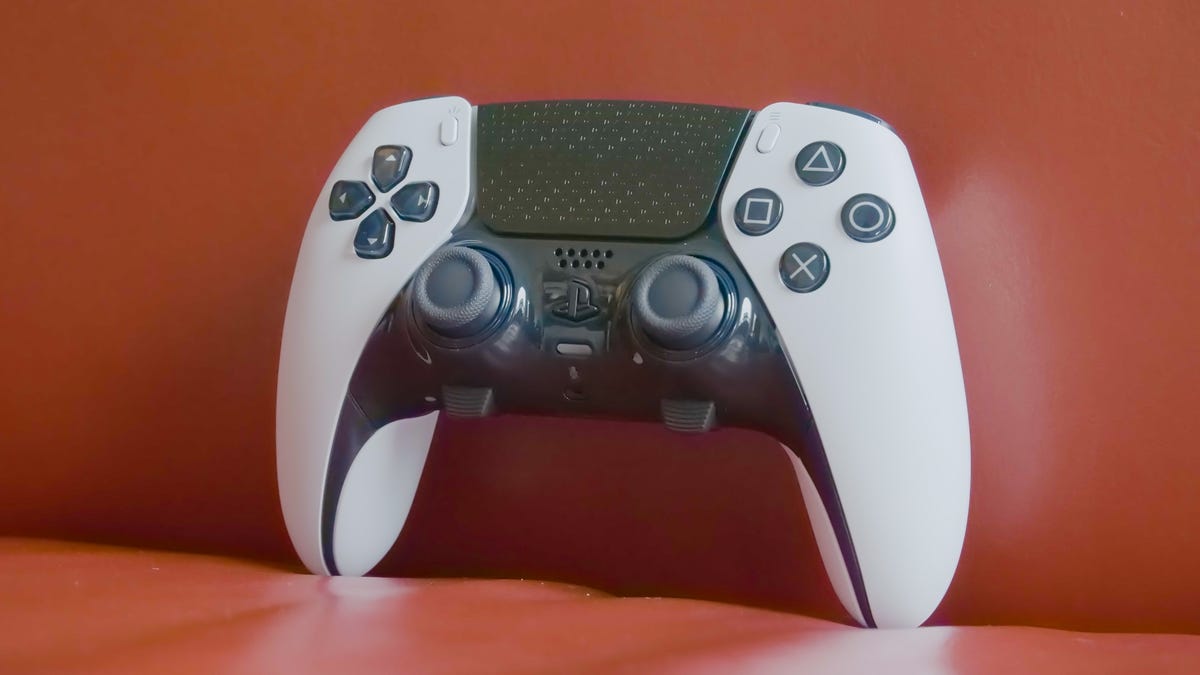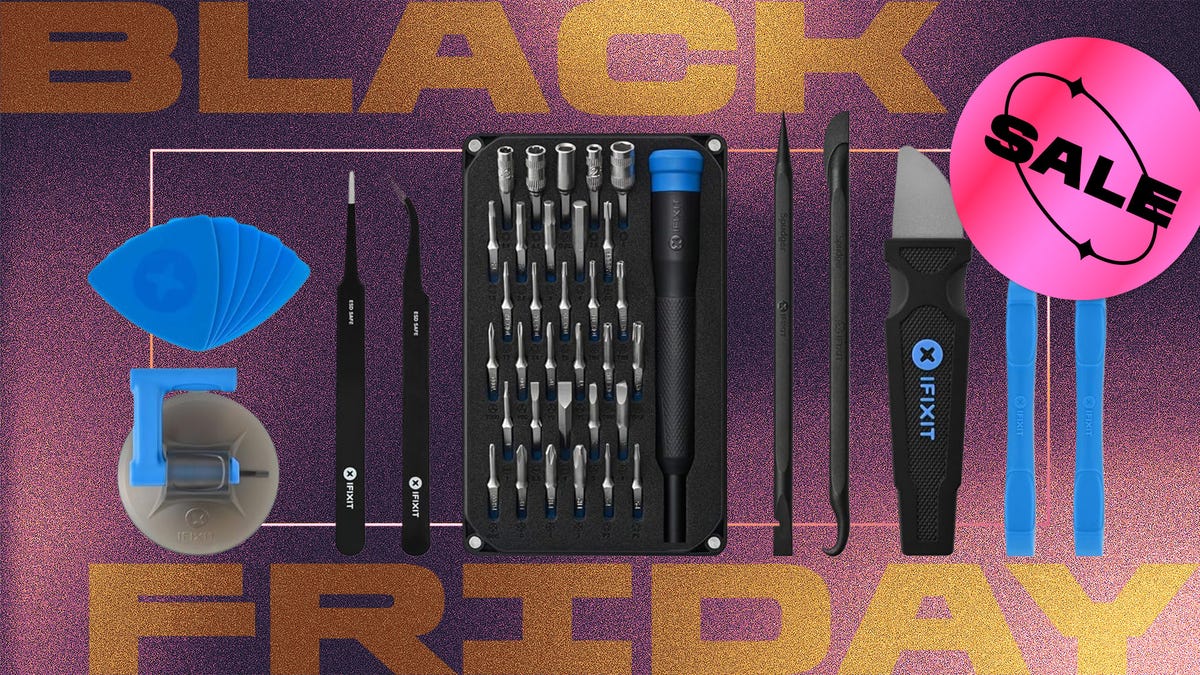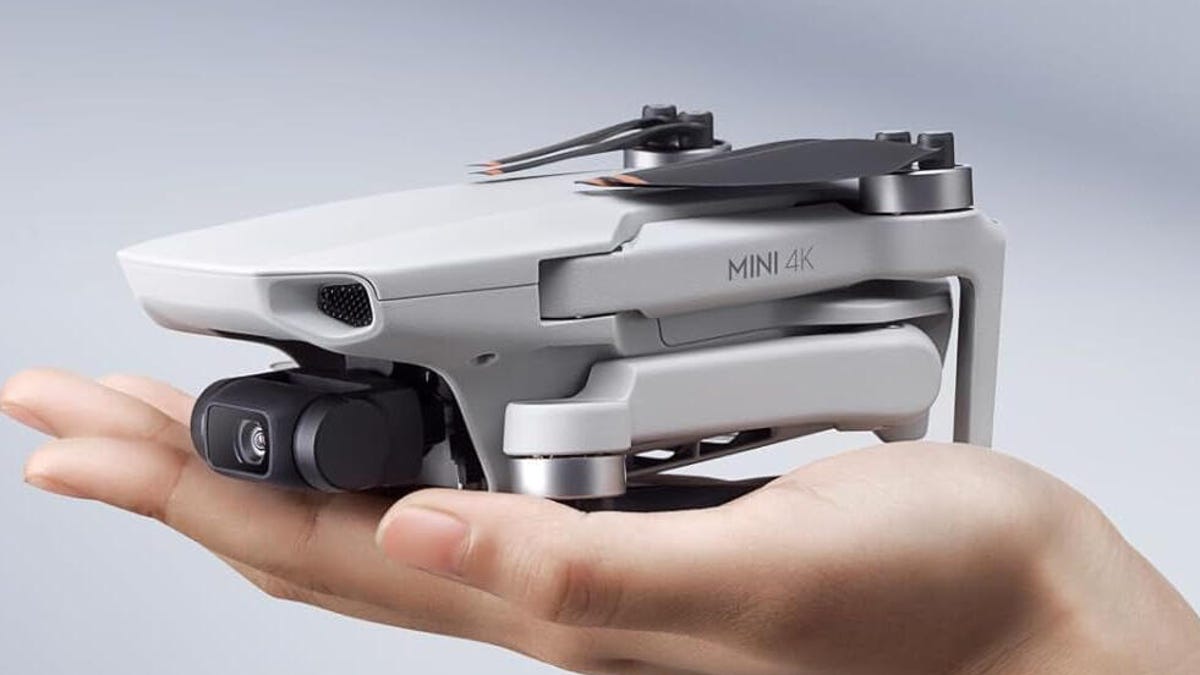Technologies
Hands-On With Sony’s DualSense Edge Controller for PlayStation 5
The expensive and pro-style DualSense Edge game controller gives players more customization and performance options.

The DualSense Edge controller is the latest accessory for Sony’s PlayStation 5, and it offers a high degree of customization at an equally high price. The PS5’s default controller, the DualSense, got its name from its ultraspecific vibration functionality. The Edge is a pro-style controller that improves on that by allowing players more options to fine-tune their inputs and, as Sony explains, «craft [their] own unique gaming experience tailored to [their] playstyle.» However, this enhanced customization doesn’t come cheap.
While a typical PS5 controller will cost you around $70, the new DualSense Edge, which comes with some accessories, is $200. Alongside the controller itself, the box includes a carrying case with a pass-through window to allow for charging, a USB-C cable and a connector housing to secure it to the controller, plus two separate options for back paddles and two options for analog stick replacements.
The DualSense and DualSense Edge controller look very similar to one another at first glance. The controllers even weigh just about the same, with the DualSense coming in at around 281 grams while the Edge is slightly more at approximately 325 grams.
The Edge features a textured grip on the handles that helps the controller stay in your hands. It also has grooves on the trigger buttons, which is nice because you can more easily keep your fingers in the proper position. Textures and grooves aside, when the back buttons are removed, the controllers feel almost identical to use. The original DualSense has a notoriously short battery life, around 7 to 10 hours. From my brief testing, I’m disappointed to report that the Edge comes in at an even lower 5 to 7 hours. The included USB-C is pretty long so, fortunately, I could still play games while the controller charged.
More buttons, more options
Pro controllers give players more options for how the buttons and triggers register inputs. When connecting the controller to the PS5 for the first time, a welcome screen shows the different customization options from both a hardware and software perspective. On the hardware side, players can attach either half-dome (rounded and short) or lever (skinny and long) back paddles to the device. These paddles sit close to where the player’s middle or ring fingers rest and can be mapped to any other input on the DualSense Edge. First-person shooter fans often use these to keep their right thumb on the right analog stick so they can aim while still being able to jump or duck (an input often put on the X or O face buttons). While both paddles are comfortable to use, I prefer the half-dome option since it sits a bit further away and can’t be as easily pressed by mistake.
These back paddles are also a great accessibility feature. Players with low range of motion for any of the primary controller fingers (the thumbs or pointer fingers) can swap one of those inputs to the back of the controller where they might have an easier time pressing a button.
The next biggest hardware tweak is in the trigger buttons on top of the controller. Next to each trigger is a mechanical switch that adjusts how much the L2/R2 buttons can be pressed before registering a full push. Players can choose between three ranges of motion. Fans of twitch-based games often prefer shorter distances so they can press quicker and more often. For example, being able to shoot a gun more rapidly will give Call of Duty players an advantage. Microsoft’s Xbox Elite controller has similar options for its triggers and paddles.
Customizing the software
Customization options are set via the PS5 accessories settings screen, and the intensity and deadzone customization options are the most exciting. These menus can adjust how fast the input curves are for any of the controller’s analog inputs. For example, if you want to physically use the full range of the trigger buttons but want the controller to register that input more quickly, you can fine-tune that on a surprisingly granular level. This goes for the analog sticks’ movement, as well. In addition, you can adjust the deadzone (the center part of the stick where the controller registers no input) to be wider.
All of these software options can be saved into a user profile. The DualSense Edge features two Fn (function) buttons, located below the analog sticks. Holding either of them down and pressing any of the face buttons will let you toggle between four assigned profiles. It seems like a missed opportunity that both of these buttons do the same thing when held down and don’t have the ability to map different commands to each one. That said, being able to swap between profiles midgame was quite useful, especially when jumping between different games. For example, Fortnite and Overwatch have different crouch buttons, so using the same profile wouldn’t be helpful.
The DualSense Edge fills a hole that was missing from PlayStation’s portfolio. The controller feels good and offers new and more personal ways for any player to connect with a game, but its high price means it only makes sense for the truly dedicated.
This review is in progress, and we’ll update with additional impressions and a video later this week.
Technologies
Repair Your Electronics at Home With This Rare Black Friday Discount on the iFixit Pro Tech Go Toolkit
This toolkit rarely goes on sale, so take advantage of this opportunity to snag it for only $40.

While Black Friday is an excellent time to replace old smartphones or broken laptops at a discount, not everyone is looking to splurge on new tech right now. If you’re shopping on a budget, or simply like the devices that you have and aren’t ready for an upgrade, investing in an electronics repair kit may be a wise option. We’ve spotted a discount on the iFixit Pro Tech Go tech toolkit, bringing its price down to just $40. But don’t delay, Black Friday is in its final hours and this kit rarely goes on sale.
The iFixit Pro Tech Go kit can be used to open up and repair a wide range of electronics, including smartphones, laptops, gaming consoles, and smart home devices for DIY repairs like battery or screen replacements. The kit has a 32-bit Moray driver kit, an opening tool, a suction handle, a jimmy, a spudger and angled tweezer to carefully open your devices.
Don’t miss any of our unbiased tech content and lab-based reviews. Add CNET as a preferred Google source.
Repairing your own tech can save you hundreds or even thousands of dollars. It also reduces e-waste by helping your devices last longer rather than throwing them away over minor issue. As of this year, all 50 states have introduced right-to-repair legislation designed to give people a legal right to fix their own tech, and several states have already signed it into law.
You can check out more deals from iFixIt now on Amazon. Plus, for other budget buys, check out our roundup of the best Black Friday deals under $100.
MOBILE DEALS OF THE WEEK
-
$749 (save $250)
-
$475 (save $175)
-
$499 (save $300)
-
$900 (save $400)
Why this deal matters
This is a record low price on a repair kit that rarely goes on sale. While we did see a modest discount on the iFixit Pro Tech Go toolkit during Amazon Prime Day in July, it was not marked down for October Prime Day or other sales such as Memorial Day or Labor Day. As such, it’s fairly unlikely that we’ll see it go on sale again this season, so this might be your last chance to get the toolkit for only $40.
Join Our Daily Deals Text Group!
Get hand-picked deals from CNET shopping experts straight to your phone.
By signing up, you confirm you are 16+ and agree to receive recurring marketing messages at the phone number provided. Consent is not a condition of purchase. Reply STOP to unsubscribe. Msg & data rates may apply. View our Privacy Policy and Terms of Use.
Technologies
Don’t Say Goodbye to Black Friday Yet. These Rare Apple Discounts Are Still Going Strong
Technologies
What a Ban Would Actually Mean for DJI Drone Owners and Holiday Shoppers
What’s the secret to a very un-merry shopping season? A brand new, unusable drone.

With Thanksgiving wrapped up and the Black Friday shopping sales here, if a DJI drone is on your holiday wish list, you might want to hit «buy» immediately. The company has issued a stark warning: Its drones could be banned from sale in the US, and the deadline is looming.
The Federal Communications Commission voted 3-0 at the end of October to «close loopholes» that allow tech deemed a «national security risk» to be sold in the US. In plain English, the US government is clearing the path to give DJI the same treatment it gave Chinese phone-maker Huawei, effectively banning its products from the American market.
The US government has deemed DJI, which is based in China, a security risk. It’s also considering a separate ban on TP-Link routers.
DJI is already sounding the alarm, posting on Instagram that a «deadline that could decide DJI’s fate in the US is just 43 days away» (now 19 days away). The company is warning that without an audit, its products could face an «automatic ban.» The US government has long labeled the Chinese drone maker a security risk, and it looks like the hammer might finally be coming down right before the holidays.
Don’t miss any of our unbiased tech content and lab-based reviews. Add CNET as a preferred Google source.
The vote isn’t the end of the road, however. Future bans would need to target specific products and would require a period of public consultation. But it appears the groundwork is being set for the FCC to block sales of future and some existing DJI drones from US shores, as well as products that use DJI technology.
The government has called for a DJI audit by the end of the year, but if that doesn’t happen, DJI drone products could be banned for sale by default under a national security law.
DJI asks for a security audit before any ban
A representative for DJI told CNET that while the FCC vote references a rule change that doesn’t currently apply to DJI specifically, the National Defense Authorization Act deadline in December would put Chinese companies like it on the FCC’s ban list, «without any evidence of wrongdoing or the right to appeal.»
Adam Welsh, head of global policy at DJI, said the company has repeatedly said it would be open to audit, but that «more than 10 months have now passed with no sign that the process has begun.»
«The US government has every right to strengthen national security measures, but this must go hand in hand with due process, fairness, and transparency,» Welsh said.
Welsh said DJI is urging the government to start the audit process or grant an extension.
Will DJI drone owners need to give them up?
Because the ban would apply to new sales, not drones that have already been sold, a DJI drone you already own would still be legal to use — at least under current rules.
Government agencies, however, are prohibited from purchasing or using drones from Chinese companies, including DJI.
DJI’s drones consistently rank high in their product category. In January, they dominated CNET’s list of best drones for 2025. But some of the company’s newest products, such as the DJI Mavic 4 Pro, haven’t been available for sale in the United States.
Even DJI products that are not yet banned may be hard to find. The website UAV Coach has posted a guide to the bans and reports that, due to inventory issues, most DJI drone models are sold out at retailers regardless of future FCC action.
-

 Technologies3 года ago
Technologies3 года agoTech Companies Need to Be Held Accountable for Security, Experts Say
-

 Technologies3 года ago
Technologies3 года agoBest Handheld Game Console in 2023
-

 Technologies3 года ago
Technologies3 года agoTighten Up Your VR Game With the Best Head Straps for Quest 2
-

 Technologies4 года ago
Technologies4 года agoBlack Friday 2021: The best deals on TVs, headphones, kitchenware, and more
-

 Technologies4 года ago
Technologies4 года agoVerum, Wickr and Threema: next generation secured messengers
-

 Technologies4 года ago
Technologies4 года agoGoogle to require vaccinations as Silicon Valley rethinks return-to-office policies
-

 Technologies4 года ago
Technologies4 года agoOlivia Harlan Dekker for Verum Messenger
-

 Technologies4 года ago
Technologies4 года agoiPhone 13 event: How to watch Apple’s big announcement tomorrow
